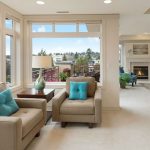While debt relief programs offer the potential for financial freedom, misconceptions about them can obscure informed decision-making. As households across various demographics consider debt relief, understanding the reality behind the myths becomes critical.
Understanding the landscape of debt relief is crucial, and it’s equally important to dispel prevalent misconceptions, starting with one of the most common.
- Myth 1: Debt Relief Instantly Fixes Financial Problems
- Myth 2: Debt Relief is Detrimental to Your Credit Score
- Myth 3: Debt Relief is Only for the Financially Desperate
- Myth 4: All Debt Relief Companies Are Scams
- Myth 5: You Can Easily Negotiate Debt Relief by Yourself
- Frequently Asked Questions
- Conclusion
Myth 1: Debt Relief Instantly Fixes Financial Problems
“I thought debt relief would be a quick fix to eliminate my debt and solve all my problems,” Mark, a small business owner with $85,000 in credit card debt, reflects. “But I soon realized that there was no magic solution.”
The reality is debt relief involves an extensive process spanning months to years before completion. Programs like debt management plans, debt consolidation loans, or bankruptcy legally mandate a schedule for stratified payments to creditors. Along the path to freedom from debt, financial trade-offs are unavoidable. Missed payments risk program dismissal, while scaled-back spending curbs lifestyle inflation. Rebuilding savings and assets can only pick up pace once debt elimination is complete.
“Staying committed to my debt management plan was essential, but it still took me over three years to pay off my debt,” shares Laura, a social worker who sought relief after her debt caused significant stress. “I had to completely alter spending habits and even take up extra work to cover living costs.”
The takeaway? While debt relief sets the stage for financial stability, the process itself requires diligent commitment through calculated spending and patient saving before healthy finances are restored.
Just as time is a critical factor in resolving financial distress, understanding the true impact of debt relief on credit scores is vital for a comprehensive strategy.
Myth 2: Debt Relief is Detrimental to Your Credit Score
“I avoided debt relief for years because I was afraid it would damage my already weak credit score,” Robin, an administrator with $47,200 in credit card debt, admits. “I didn’t realize that some options have a lesser impact than others.”
The impact of debt relief on credit scores varies depending on the program. Strategic planning is key to minimizing score damage when considering options like debt management or consolidation to resolve account delinquencies and enrolling with non profit credit counseling services skilled in debt relief California to improve credit score and debt.
The impact of debt relief on credit scores varies depending on the program:
-
Debt Management Plans: Can improve credit scores over time by resolving account delinquencies. On-time payments are reported to credit bureaus.
-
Debt Consolidation Loans: Can maintain or improve credit scores through loan payment history. Credit mix also strengthens scores.
-
Bankruptcy: Significantly damages credit scores due to discharged debts. Most adverse information stays on reports for 7-10 years.
Strategic planning is essential to minimize score damage. Collaborating with a non-profit credit counseling agency allows for discussions on preserving credit scores while pursuing debt reduction.
“I brought up my credit score worries multiple times while deciding between debt relief programs,” says Robin. “The counselor helped me choose debt consolidation over bankruptcy, so my score dropped initially but recovered within 18 months.”
Acknowledging the nuanced relationship between debt relief and credit scores shifts focus to another widespread misconception, concerning the demographic debt relief targets.
Myth 3: Debt Relief is Only for the Financially Desperate
The stigma around debt relief conjures images of financial insolvency, utter desperation, and last-ditch rescue efforts. The reality is far from this stereotype.
In the aftermath of recessions, medical emergencies, unemployment spells, or global pandemics, debt relief applications cut across incomes. According to nonprofit credit counseling agency reports, while 60% of debt management plan recipients in 2021 earned less than $40,000 annually, 35% represented middle-class households earning over $50,000 a year with college degrees.
Debt relief can aid households in distress, regardless of income level. Especially during crises, weakened economic prospects, reduced incomes, and depleted savings make debt relief a tactically advantageous choice, contrary to societal assumptions. It allows debt restructuring without deep lifestyle cuts, especially when incomes still cover living expenses. Long-term stability takes priority over short-term social scoring.
“When medical bills overwhelmed my teacher’s income, debt management provided urgent relief without reliance on savings,” says Molly, a social worker. “Banishing all debt in under 5 years gave my client financial room to breathe.”
The choice to start debt relief journeys is as much about selecting an able partner as it is about timing and financial strategy – debunking yet another money myth.
Myth 4: All Debt Relief Companies Are Scams
Amanda, an engineer with $114,000 in student debt, hesitated t seek help due to concerns about debt relief scams, despite qualifying for relief programs. She represents thousands conditioned to view all debt relief companies as fraudulent.
However, reputable firms are discernible from corrupt ones by stated credentials, transparent processes, and publicly available customer reviews. The US Federal Trade Commission offers guidelines to verify the legitimacy, which includes checking registration, fees, promises made, and the contracts offered
Identify potential scams by looking for red flags such as:
* Pressure to sign up instantly
* Requests for upfront fees before services
* Promises to erase debt or halt collections
* Lack of individualized plans
“I confirmed state registration, affiliation with fraud protection groups, and customer satisfaction levels before choosing a debt management company,” says Amanda. “The free consultation, reasonable fees, and detailed proposal gave me confidence I avoided scams.”
Selecting legitimate partners provides necessary vigor to debt relief efforts. However, the journey itself has spawned myths that require clarity.
Myth 5: You Can Easily Negotiate Debt Relief by Yourself
“I thought my financial know-how would allow me to easily negotiate debt relief terms with credit card companies myself,” Mark admits with regret. “I was completely wrong.”
Attempting ‘DIY’ debt relief involves cold calling unrelenting creditors alone and negotiating reduced payments or settlement offers without guidance. Financial literacy rarely matches specialized experience. Industry insights into organizational processes, settlement trends, and negotiation techniques prove invaluable.
The Debt Management Credit Counseling Corporation reveals that 70% of debt repayment plans and 89% of debt settlement attempts successfully pursued with industry assistance fail when pursued alone.
“The debt management company negotiated my debt down by 55% compared to my attempts,” says Robin. “Their expertise saved me years of needless repayment.”
Recognizing one’s limitations shifts the mindset from stubbornness to prudence – a crucial first step in addressing FAQs on debt relief.
Frequently Asked Questions
Q1: Is debt relief the same as debt consolidation?
No. Debt consolidation combines multiple debts like credit cards or loans into one consolidated payment, usually with lower interest rates. It focuses on simplifying payments. Meanwhile, *debt relief* directly reduces or eliminates balances through programs like settlements or bankruptcy legal proceedings.
Q2: Will debt relief stop creditor calls?
Yes, often. By law, creditor calls usually halt once enrolled in debt management plans or negotiating settlements. Bankruptcy filings also legally prevent collections. But persistence varies. Keep written records of any violations.
Q3: How will debt relief affect future credit?
The impact varies. Bankruptcies can affect credit for up to 10 years making loan approval challenging while debt consolidation enables faster credit rebuilding. Outcomes improve by maintaining payments in debt relief programs. Credit counselors help strategize based on personal financial goals.
Combining through questions unveils debt relief complexities. The decision to enroll is aided by professional insights tailored to individual goals and contexts.
Conclusion
Dispelling prevalent myths is crucial in mapping prudent pathways out of debt. Debt relief facilitates the shedding of burdens for financially encumbered households across the income spectrum. Sustainability of outcomes requires diligence along often lengthy processes. Success necessitates partnering with reputable advisors, not improbable promises.
Armed with reality checks and expert support, navigating the debt relief landscape carefully promises not just a pot of gold at the end of the rainbow but tangible financial freedom and stability for years, beyond mere hype. For peace of mind and informed financial decisions, seek tailored guidance today.



